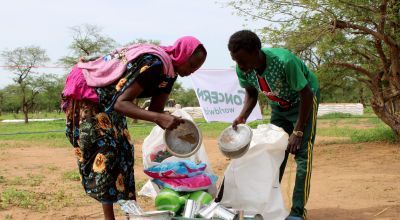
Read our 2022 annual report

Knowledge Hub
Conflict is one of the leading causes of hunger and poverty and a fact of life in many of the communities where Concern works.
It’s often a deciding factor when we enter a new country, creating large humanitarian needs especially around hunger and poverty. Last year, Concern began to respond to these needs in Ukraine. In 2021, similar circumstances led to us establishing programmes in Burkina Faso. Here are the stories behind those — and 12 other countries in conflict where we are currently at work.
1. Afghanistan
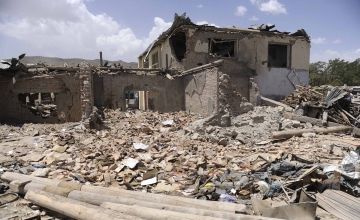
Despite development advances in recent years, Afghanistan remains an extremely volatile and fragile country following nearly four decades of instability. Violence continues to undermine the country’s development, with almost two thirds of the Afghan population living in areas directly affected by conflict. Between 2009 and 2022, the Council on Foreign Relations estimates that there were 111,000 civilian casualties in Afghanistan.
This has a direct impact on humanitarian aid. Before the US military withdrew from the country in 2021, over 18 million people required humanitarian assistance — including over 3 million children. This was double the number of people who required assistance compared to January 2020. Today, UNOCHA estimates that 28.3 million people require humanitarian assistance.
2 & 3. Burkina Faso, Niger, and the Sahel
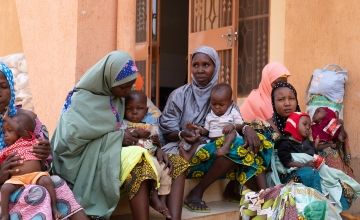
A decade of armed conflict in the western Sahel region of Africa has resulted in a deteriorating humanitarian situation across Mali, Burkina Faso, and Niger. Crisis knows no borders, and what began as violence in Mali in January of 2012 has now resulted in attacks across the region, which surged in 2021. That year alone, UNOCHA estimates that half a million people were displaced.
Currently, UNOCHA estimates 4.7 million people in the Sahel require humanitarian aid — a 34% increase compared to last year. UNICEF estimates 3.2 million children require assistance — a 23% increase compared to last year. Despite going on for over a decade, the violence has escalated in recent years due to broken ceasefires and renewed hostilities.
» Learn more about the crisis in Burkina Faso
» Learn more about Concern’s work in Burkina Faso
4. Central African Republic

The Central African Republic’s civil war turned 10 in 2022, but it’s only the latest in a series of clashes since the country gained independence from France in 1960. What began in 2012 as an insurgency led by paramilitary forces has resulted in heightened ethnic and religious tensions and a weakened infrastructure and social support system for nearly 5 million people. The Central African Republic borders both the DRC and South Sudan (more on each country below), which means that, as the situation continues to deteriorate in-country, the ramifications of conflict spill out into neighbouring countries, exacerbating their own conflicts and leaving an entire region in dire straits.
Humanitarian access in CAR has suffered in recent years due to escalating conflict. “Less than 40% of NGO operations are currently continuing due to a lack of safe access,” Concern’s Country Director Elise Ponson said in 2021. “This is in a country where almost all basic services such as healthcare, education and food assistance outside of the capital are provided by NGOs.” Concern is continuing to maintain its operation in one town, but it is very difficult to assess the scale of the humanitarian needs in most rural areas as it is not safe to travel by road.
» Learn more about the crisis in the Central African Republic
» Learn more about Concern’s work in the Central African Republic
5. Chad and the Lake Chad Basin

Chad has experienced some of the same conflict affecting the Sahel (see Burkina Faso, above). However, there is a larger amount of intercommunal conflict centred on the Lake Chad Basin. For the last 14 years, this violence has affected the region — which also includes areas of Cameroon, Niger, and Nigeria. One of the latest UNOCHA reports from the end of 2022 revealed that 60 security incidents killed 109 people in November of that year alone. These were uniformly the result of non-state armed groups. A total of 917 incidents were recorded last year, making it one of the most violent years in the region in the last decade. As of 2023, 11 million people in the region require humanitarian protection and assistance.
6. Democratic Republic of Congo
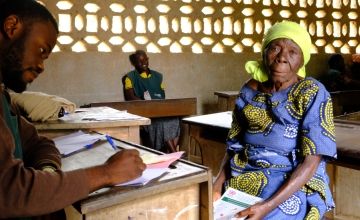
The scene for one of the worst-ever civil wars in African history, the Democratic Republic of Congo has moved from the national conflict of the late 1990s to a series of smaller, localised conflicts focused in specific regions and centred on land, resources, and power. The impact of King Leopold II of Belgium’s bloody colonisation of the country is still felt in this ongoing series of violent conflicts.
While conflict has become more localised, that does not lessen its damage. Sporadic waves of fighting across many parts of the country make the DRC a complex and challenging humanitarian situation. Over 5 million Congolese people are internally displaced within the country, representing the third largest population of internally displaced people (IDPs) in the world. The latest UNOCHA estimates place the number of Congolese requiring humanitarian assistance at over 26.4 million — a 20% increase compared to last year.
7. Ethiopia

Since November 2020, conflict in northern Ethiopia has led to a growing humanitarian crisis. As of early 2023, 3.1 million people across the country are internally displaced — down from a peak of 5.1 million in 2021.
While a peace deal was signed in November 2022, the net effects of the conflict continue. Hunger has been one of the major concerns, with the scale and level of food insecurity soaring in recent years. In 2023, the UN estimates that 9 million people are in need of food assistance.
8. Somalia

The beginning of the ongoing Somali Civil War is a subject of debate. Many organisations (including the UN) say it was 1991. Other experts argue that it started as many as 10 years earlier. This gives you an idea of how long the country has faced violence and insecurity, regardless of how it’s been labelled.
Despite a number of ongoing crises in Somalia, the violence and brutality of conflict is the crisis that arches over all the others. Civilian casualties due to violence aren’t the biggest killer, however. Three decades of instability have weakened the country’s health system and undermined other key aspects of its infrastructure. These issues have increased due to the current drought crisis across the Horn of Africa. In Somalia, all of this has left 7.8 million people in need of humanitarian aid — over 5 million of whom are children. Huge portions of the country are not under government control.
As Concern Somalia’s country director, Abdi Rashid Haji-Nur, explains: “Operationally, it is difficult for national and international humanitarian agencies to deliver services to people in the different parts of the country. As long as there is absence of efforts to contain and to deescalate those tensions and conflicts, we will be having challenges in terms of having access.”
9. South Sudan

Prior to the outbreak of conflict in December 2013, there was reason to be hopeful about the future of South Sudan. Not only had secession been peaceful, but the country was also host to rich oil fields. Many were optimistic that 2013 would be a year of development and progress. Instead, the conflict — which has led to breakdowns in social services and protection — continues to have severe consequences for a country where human development ranks among the worst in the world.
The conflict rapidly took on an ethnic dimension, which helped to displace over 4 million South Sudanese. Meanwhile, peace processes have been delayed multiple times, leaving violence to spike in the absence of a transitional government.
10. Sudan
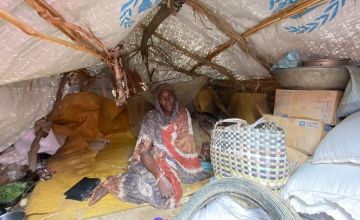
Protests in Sudan during the summer of 2019 culminated with the removal of its long-term president, Omar al-Bashir. However, a co-governing partnership between civilians and military forces deteriorated in 2021 and has made the country’s future uncertain, with UNOCHA estimating more than a quarter of a million Sudanese displaced by conflict in 2022. Political instability escalated earlier this year, leading to even more displacement and humanitarian need.
Of the 15.8 million Sudanese who will require humanitarian assistance in 2023 (that’s roughly one-third of the population), UNOCHA estimates that 50% require support due to protracted conflict. That number has gone up in recent years. In 2022 alone, over 310,000 people were newly displaced due to conflict and violence. This includes tens of thousands of people who were displaced in December 2022 alone due to clashes in West Kordofan and Blue Nile that resulted in approximately two security incidents reported each day that month.
11. Syria

Since early 2011, a civil conflict in Syria has resulted in enormous suffering for millions of people. 11.5 million people — nearly half of the country’s estimated pre-war population — have been displaced. 5.4 million are living as refugees in neighbouring countries, leaving 6 million displaced internally.
The protracted conflict has left Syria as one of the worst humanitarian crises in the world. UNOCHA identifies 15.3 million people in need of humanitarian assistance (including 4.1 million people at catastrophic levels of need), a 14% increase compared to last year. This is out of a total population of 17.5 million people. Once a country with a thriving middle class, 83% of Syrians now live below the poverty line.
By many accounts from those still living in the country, the violence of conflict is not confined to bombing, missile attacks, and the destruction of cities and infrastructure. Rather, it has seeped into every aspect of Syrian life. Many civilians who have spoken with Concern say that they don’t feel safe or secure in any environment — including their own homes. Personal security, now an alien feeling, is no longer taken for granted. This is especially true for Syrian women and girls.
12. Ukraine

Last year, an eight-year crisis in eastern Ukraine became a major conflict in just a few weeks. On February 21, 2022, the Russian Federation officially recognised the independence of two non-government-controlled areas in Ukraine along the Russian border, Donetsk and Luhansk. Two days later, Ukraine declared a nationwide state of emergency. The following day, Russia announced a full-scale military operation.
Within the first 24 hours of fighting, the Office of the United Nations High Commissioner (OHCHR) reported 240 civilian casualties, including 34 deaths. The violence has not abated, and intense fighting has spread across the country. In less than a year, Ukraine became one of the world’s largest refugee crises and humanitarian crises, with 7.9 million refugees, 6.5 million Ukrainians displaced internally, and 17.7 million requiring some form of humanitarian assistance.
Countries in conflict: Concern’s response
Last year, Concern responded to 66 emergencies in 23 countries, reaching 17.8 million people. Conflict played a role in many of these emergencies. In each context our goal remains the same: to fulfil our humanitarian mandate.
When an emergency strikes, we seek out the poorest and hardest-to-reach communities to meet their immediate needs, and work with them to design innovative, fast and effective responses. We stay with them to help rebuild their lives and to ensure that they are better able to cope with future crises. Your support allows us to do this vital work.
Banner photo: Dimitar Dilkoff/AFP via Getty Images, used with permission.



